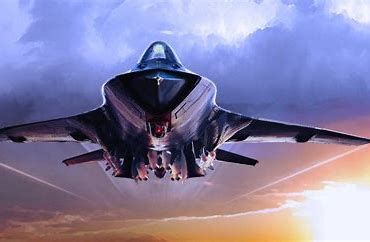
Russia’s ambitious aerospace venture, the MiG-41, has stirred international intrigue with claims of near-space flight capabilities and unmatched speeds surpassing Mach 4.

This advanced interceptor hailed as the sixth-generation successor to the venerable MiG-31 “Foxhound,” promises to push the envelope of military aviation.

The MiG-41, as Russian sources say, will not only operate at altitudes untouched by current warplanes but will also boast unprecedented features such as anti-missile lasers and directed electromagnetic pulse (EMP) weapons.

These non-kinetic systems, expected to be ready for testing as soon as next year, could cripple enemy aircraft electronics, effectively turning sophisticated fighters into powerless stones mid-flight.

The nation’s struggles with its current defense demands, notably the production of the MiG-35, cast a long shadow over the prospects of the MiG-41.

Doubts remain as to whether the MiG Corporation can surmount the daunting technological and economic hurdles to make this starfighter-esque aircraft a reality.

As history has shown with the MiG-1.44, Russia’s track record of realizing its aerospace dreams has been marred by overambition and underfunding.

The MiG-1.44 was meant to be the Soviet answer to the American F-22 Raptor but ultimately became a symbol of unfulfilled aspirations as the USSR failed to match the West’s defense spending during the Reagan administration.

Today, Russia’s Su-57 “Felon” fighter, another advanced design claiming stealth capabilities and fifth-generation status, has also faced deployment hesitation.

Fears of losing these expensive assets to Ukrainian defenses have kept them grounded, indicating a broader trend in modern warfare where advanced technologies are being outwitted by more economical, albeit older, systems.

The MiG-41’s proposed capabilities are not just ambitious; they border on science fiction.

The incorporation of a pulse-detonation engine, which, if the United States rumors are to be believed, could redefine high-speed travel, is a work in progress that the rest of the world has yet to confirm or achieve.

Engaged in Ukraine and contending with Western economic sanctions, Russia grapples with tight funding and a stretched military-industrial base.

These factors raise valid questions about the feasibility of not only the MiG-41 but also of maintaining stealth technologies at hypersonic speeds—a challenge even the U.S. confronts with difficulty.

As with the legendary SR-71 “Blackbird” and its anticipated successor, the SR-72, the path to revolutionary aviation technology is fraught with political, economic, and technical obstacles.
Relevant articles:
– Russia’s MiG-41 Fighter Nightmare Has Just Begun, The National Interest
– Russia’s Su-57 Felon Fighter Nightmare Is Just Getting Started, The National Interest
– Russia’s MiG 1.44 Fighter Jet Nightmare Just Won’t End, The National Interest
– Russia Pushes ‘Aviation Boundaries’ With MiG-41 PAK DP 6th-Gen Fighters; Can It Really Fly By Early 2030s?, eurasiantimes.com
